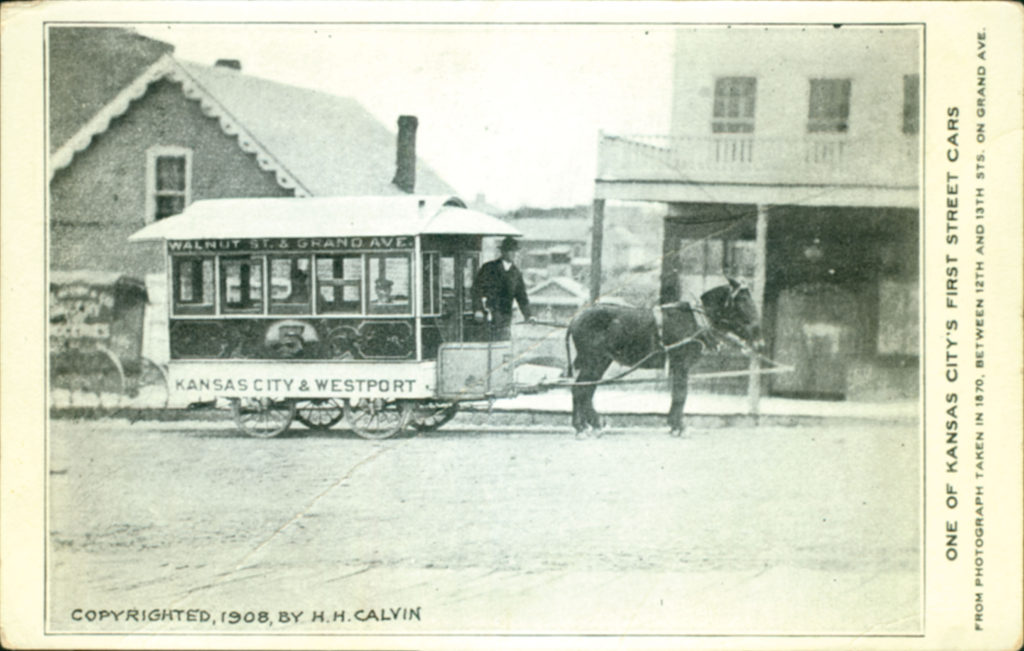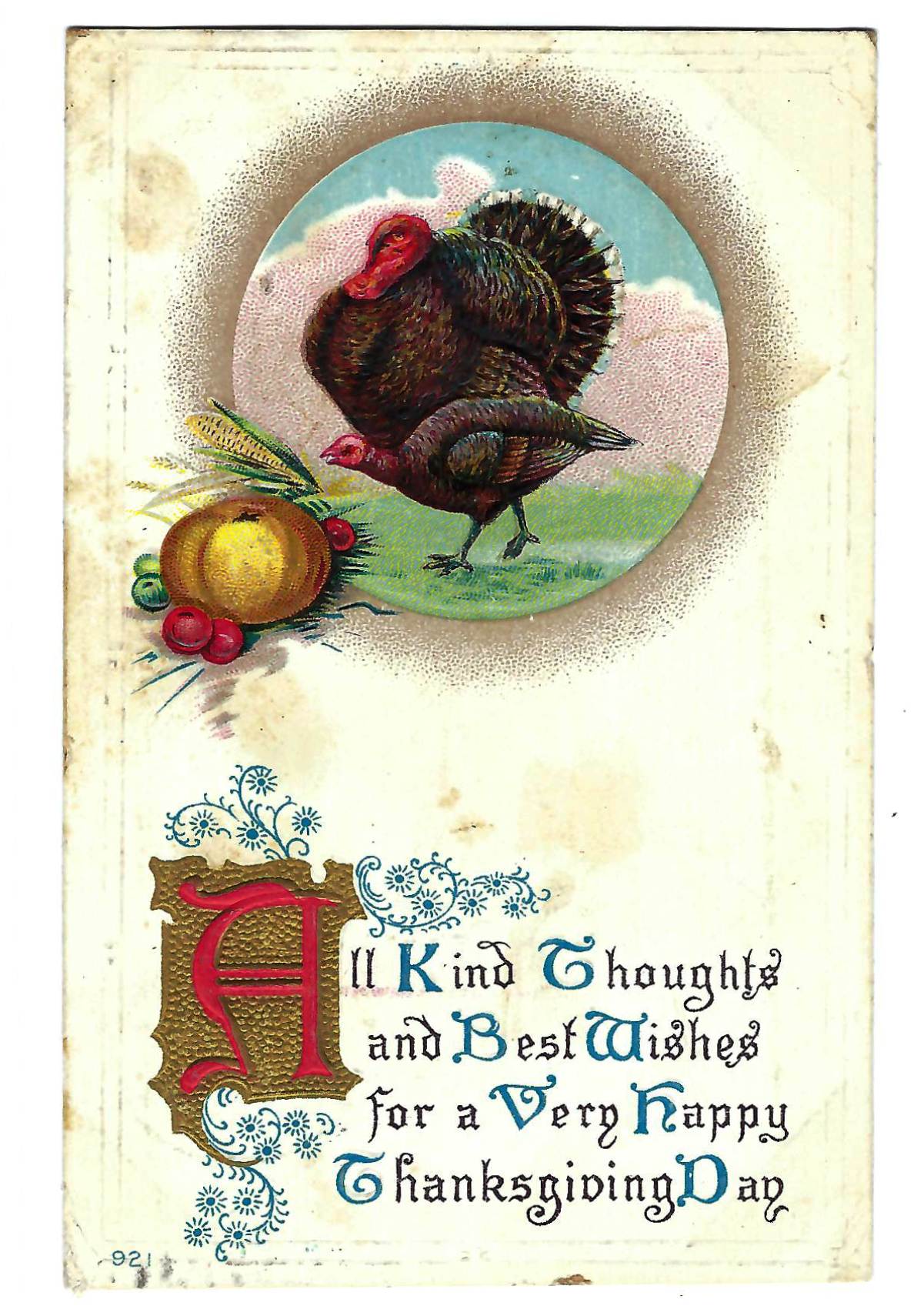By MICHAEL BUSHNELL
Northeast News
December 14, 2016
Kansas City’s street railway began humbly in 1869 with the advent of small, animal-drawn (usually using mules due to their availability) cars along rails laid in already existing city streets. The idea was to ferry people between the cities of Kansas City and Westport. It was not the most sanitary way to travel, especially when downwind from the animal pulling the passenger car.
This week’s postcard, titled “One of Kansas City’s First Street Cars,” shows a black and white photo postcard reproduced from a highly publicized photograph of the Kansas City and Westport Streetcar Line circa 1870. The photo was taken between 12th and 13th streets on Grand Boulevard, according to the caption on the side of the postcard.
Octave Chanute had just completed the Hannibal Bridge, the first bridge across the Missouri River just north of downtown, thus securing Kansas City’s position as a major western terminus at the edge of what was then considered the vast American frontier.
Both Kansas City and Westport were growing rapidly. Land between the two cities skyrocketed in value, largely helped by the owners of various street car lines who developed the transportation companies often in conjunction with residential real estate developments along their route. One of the greatest promoters of this early system was Willard Winner, namesake for today’s Winner Road that follows Winner’s original track line from its 15th and Askew streets terminal to points east in Independence and Sugar Creek.
Winner was a partner in the successful amusement park at Mt. Washington along the eastern reaches of Independence Road. Another area railroad developer who followed the same idea was Arthur Stilwell, who developed Fairmount Park in what is now Sugar Creek to save his failing Kansas City Suburban Belt Car Line.
Kansas City’s streetcar system floundered through the 1950s as the automobile took over as a more convenient travel option. The last true streetcar to ply the rails in Kansas City was piloted by Mayor H. Roe Bartle in 1957. This card, published by local photographer H. H. Calvin, was never mailed.
Streetcars were the way to go
Related Posts
An Arts and Crafts Era Christmas
Michael Bushnell Contributing Historian With the Arts and Crafts Movement in full swing at the time, we bring you this simple, Christmas greeting postcard sent from Chicago, Illinois to Miss…
Thanksgiving Day Greetings
Michael Bushnell Contributing Historian What Americans celebrate today as Thanksgiving is traditionally tied to a three-day feast involving the Pilgrims after their first American harvest in 1621. The previous winter…




















